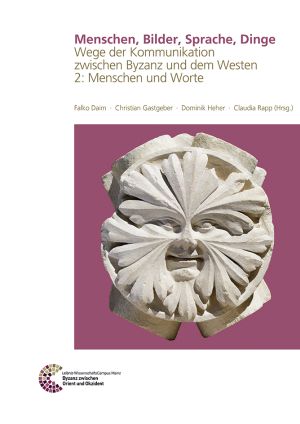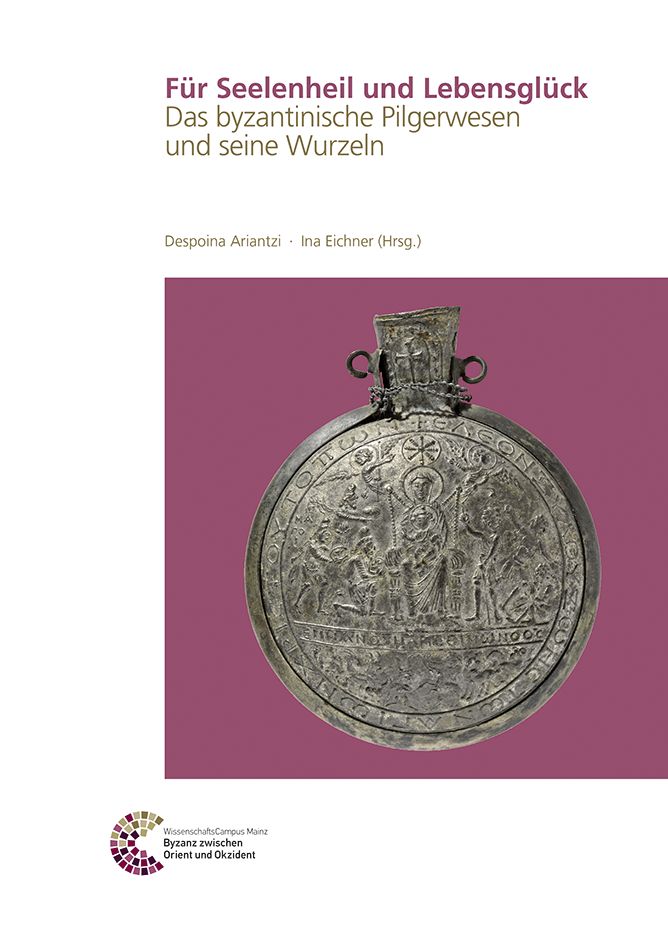Descœudres, Georges
Menschen, Bilder, Sprache, Dinge: Wege der Kommunikation zwischen Byzanz und dem Westen 2: Menschen und Worte
2018 zeigt das Römisch-Germanische Zentralmuseum Mainz in Zusammenarbeit mit der Schallaburg in dem prachtvollen Renaissanceschloss nahe Melk (Niederösterreich) die Ausstellung »Byzanz & der Westen. lOOO vergessene Jahre«.
Beide, Byzanz und der europäische Westen, entspringen dem römischen Weltreich, doch nehmen sie schon ab der Spätantike unterschiedliche Entwicklungen. Während das Römische Reich im Osten Bestand hatte und nahtlos in das Byzantinische Reich des Mittelalters überging, traten im Westen gentile Herrschaften an dessen Stelle, Königreiche der Goten, Vandalen, Angelsachsen, Langobarden und Franken. Zwar blieb Byzanz zumindest 800 Jahre lang für die anderen europäischen Entitäten respektierte oder akzeptierte Großmacht, doch kam es sehr schnell zu Gebietsstreitigkeiten, Zwistigkeiten und kulturellen Differenzen. Zudem wurde die Verständigung immer schwieriger - im »orthodoxen« Osten war Griechisch Verkehrssprache, im »katholischen« Westen Latein die lingua franca. Unterschiede in Liturgie und Glaubensfragen verstärkten die Differenzen oder wurden (religions)politisch zur Betonung der Verschiedenheit sogar noch unterstrichen. Aber immer noch bewunderte man das »reiche Konstantinopel« und die byzantinischen Schätze - darunter die herrlichen Seiden, Elfenbeinreliefs, technische Wunderwerke, die vielen Reliquien, grandiose Bauwerke.
Die Wende kam 1204 mit der Eroberung und Plünderung Konstantinopels durch die Kreuzfahrer. Für das bereits vorher geschwächte Byzantinische Reich bedeutete diese Katastrophe eine völlige neue Situation als ein Exilreich, dessen Kaiser und Patriarch nach Kleinasien ausweichen mussten. In einem Großteil des ehemals europäischen Byzantinischen Reiches machten sich Kreuzfahrerstaaten breit; Venedig und Genua, die durch Sonderverträge schon zuvor als Handelsmächte stark präsent waren, wurden zu bestimmenden Faktoren der westlichen Mächte im Osten.
Anlässlich dieser Schau erscheinen zwei Begleitbände mit insgesamt 41 Beiträgen zu den ebenso vielfältigen wie wechselhaften Beziehungen zwischen dem lateinischen Westen und dem Byzantinischen Reich. Die Bände sind nach den Medien der Kommunikation strukturiert: Menschen, Bilder, Sprache, Dinge. Sie versammeln Beiträge namhafter Wissenschaftlerinnen und Wissenschaftler mit archäologischer, kunsthistorischer, philologischer und historischer Schwerpunktsetzung. Mehrere Überblicksdarstellungen und Detailstudien schöpfen aus Forschungsprojekten des Leibniz-WissenschaftsCampus Mainz: Byzanz zwischen Orient und Okzident sowie dem Schwerpunkt Byzanzforschung und Mittelalterforschung der Österreichischen Akademie der Wissenschaften in Wien.
Für Seelenheil und Lebensglück: Das byzantinische Pilgerwesen und seine Wurzeln
Die internationale Abschlusskonferenz des Projekts »Für Seelenheil und Lebensglück. Das byzantinische Pilgerwesen und seine Wurzeln« vom Dezember 2015 versammelte Wissenschaftlerinnen und Wissenschaftler aus den Disziplinen von Archäologie, Byzantinistik, Kunstgeschichte, Geschichtswissenschaften, Religionsgeschichte, Epigraphik und Historischer Geographie, die sich dem Phänomen der Pilgerfahrt im Byzantinischen Reich widmeten.
Die Beiträge erörtern die Zusammenhänge des byzantinischen Pilgerwesens mit der heidnischen und jüdischen Pilgerfahrt. Vor allem aber präsentieren und diskutieren sie die Praxis des Pilgerwesens zwischen »Kult und Kommerz« im sakraltopographischen und landschaftlichen Kontext einzelner Regionen und Orte des Byzantinischen Reiches von Ägypten bis Bulgarien und von Süditalien bis zum Heiligen Land.








